BMW’s recent unveiling of the Neue Klasse X concept showed us how the BMW iX3 is set to radically progress in 2025.
The heavy focus on the electric SUV doesn’t mean Munich is abandoning the combustion-engined BMW X3 any time soon, though. On the contrary: as petrol, diesel and plug-in hybrid cars continue to take the majority of the brand’s sales, it will send its most popular model into a fourth generation at the end of this year.
The new X3 uses the same CLAR platform as before, so it’s not an entirely new car but a development of its seven-year-old predecessor. Nevertheless, says project leader Martin Delitz: “We’ve re-engineered many elements, including the chassis, to give it an even broader range of driving characteristics and added ride comfort. The electric architecture is also new, allowing us to offer more efficient drivetrain options as well as more advanced driver assistance systems.”
Even with wraps disguising the exteriors of our high-mileage durability prototypes, it’s clearly a bolder-looking car, with a wider kidney grille, a higher front end, pronounced wheel arches and a more sloped roof – but not one akin to the Neue Klasse X, indicating that the X3 and iX3 will notably diverge.
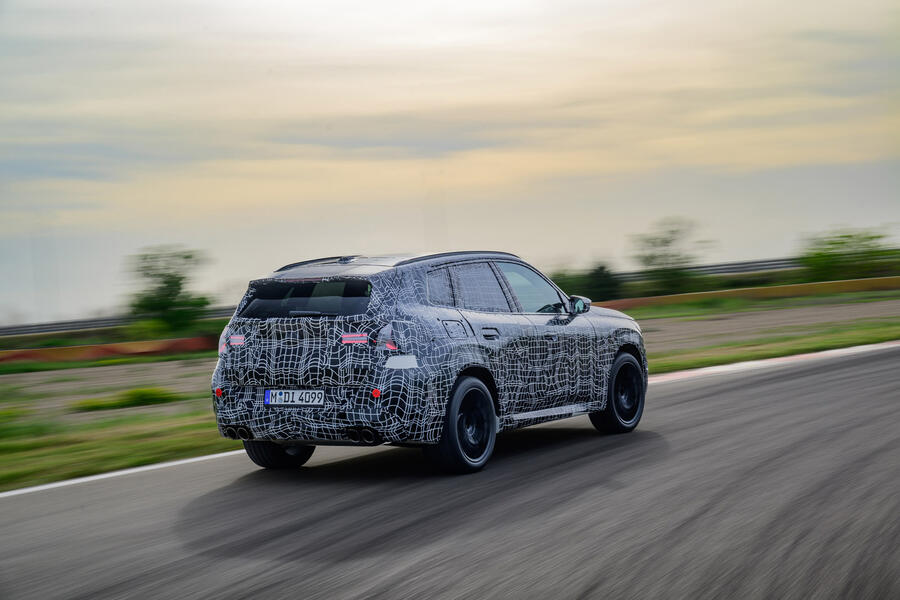
At 4755mm long and 1920mm wide now, the X3 has grown by a respective 42mm and 23mm. Its height, however, has been reduced from 1676mm to 1660mm. Despite the lengthening, the wheelbase remains at 2865mm, but the front and rear tracks are a bit wider.
Inside, there’s a new-look dashboard with a display panel housing the digital instruments and infotainment. This uses BMW’s latest Android-based operating system, OS9, but pleasingly keeps the iDrive rotary controller.
It also adopts the same steering wheel that was introduced on the latest 5 Series, with its simplified controls.
The centre console has also been redesigned, gaining a toggle-style gear selector and a large bin that houses a phone charging pad, cupholders and two USB-C ports.
BMW says it has given the X3 a more upmarket feel, but most areas were covered in my test prototypes, so any judgement on materials or quality will have to wait.
The driving position is more sporting than in many mid-size SUVs, while new front seats offer generous adjustment. However, due to a higher bonnet and a smaller rear screen, visibility is worse.
Accommodation is on par with today’s X3. It’s not class-leading but sufficient to provide the sort of space and versatility that’s sought by family SUV buyers.
The powered tailgate opens to reveal a flat but fairly high-mounted cargo bay – up 20 litres to 570 litres, increasing to 1700 litres when the 40:20:40-split rear seats are stowed.
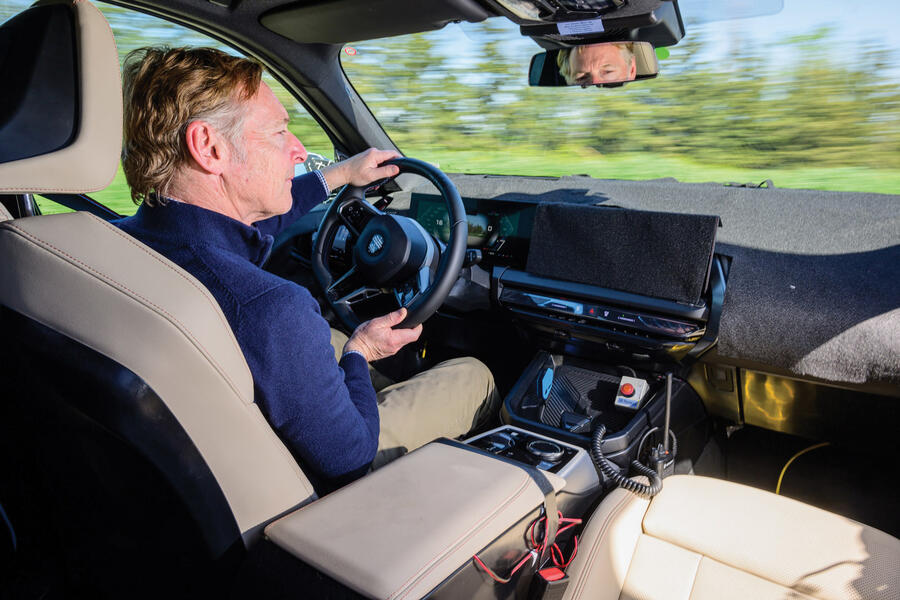
BMW plans four X3 variants from the start of UK sales, all featuring mild-hybrid tech, an eight-speed automatic gearbox and four-wheel drive as standard: the four-cylinder petrol xDrive20, four-cylinder diesel xDrive20d, xDrive30e plug-in hybrid and six-cylinder petrol M50 xDrive. I tried the latter two in and around a BMW testing facility in France.
The PHEV has an updated version of its predecessor’s powertrain, featuring a newer 2.0-litre turbo petrol four, a revised gearbox-mounted electric motor and a more advanced battery with a greater capacity than the 18.9kWh pack used by today’s X3 xDrive30e – and therefore an increase on its 37-mile electric-only range. It’s also expected to offer an increase on the 288bhp combined output.
The PHEV is distinctly quiet and very smooth, with flexible and cultured qualities that make it every bit as capable in urban driving as it is out on the open road. There’s strong step-off and latent urgency to the performance on a loaded throttle when the battery is charged and the electric motor contributes to the overall output.
The more sporting M50 xDrive, meanwhile, is set to adopt a lightly reworked version of the existing M40i xDrive’s turbocharged 3.0-litre straight six ‘B58’ powerplant with something in the region of 396bhp.
It’s impressively fast and much more characterful than its electrified sibling, with potency and linearity to its delivery, providing it with a 0-62mph time that BMW says betters the 4.8sec of its predecessor.
Set to head the new X3 line-up until the introduction of a successor to today’s 503bhp straight-six-engined X3 M Competition next year, it also receives an electronic rear M differential as standard, giving it outstanding traction.
BMW hasn’t seen fit to provide the X3 with air suspension or twin-valve dampers, like those found on some rivals. However, it has reworked the existing X3’s double-wishbone front and multi-link rear steel-spring arrangement, giving the new car a 23mm wider front track, more rigid mounting points for the front anti-roll bar and added strengthening to the rear axle mounting points. Passive dampers are standard, but as with today’s X3, buyers will be able to opt for adaptive dampers.
The steering forgoes the dual-pinion design of today’s X3 for a new belt-driven set-up. Additionally, the M50 gets extra engine-bay strut bracing to stiffen up its front end and greater front wheel camber. Wheel and tyres sizes will range from 18in to 21in.
The changes provide the X3 with more accomplished dynamic qualities. There’s a more precise feel and more constant weighting to the steering, improved body control, with greater resistance and more progressive build-up to roll upon turn-in, and, most noticeably of all, added wheel control and greater overall composure to the ride, with impact harshness particularly having being greatly reduced in combination with the adaptive dampers. It’s certainly more rounded and capable than before – and in the case of the M50, which comes with its own uniquely tuned sports suspension, more engaging and involving too.
But these are prototypes – well-worn ones at that, having racked up miles all over the globe. A true picture of the new X3’s dynamic qualities won’t come until we get to drive production versions later this year. When we do, BMW says they will offer up to 40 different driver assistance systems, many shared with the larger and more expensive X5. Together with its new faster-reacting infotainment system and features such as over-the-air software update functionality, it promises to be much more contemporary in overall feel and operation.
The future is electric, no doubt – but traditional powertrains are set to play important roles in the X3 for a while to come.
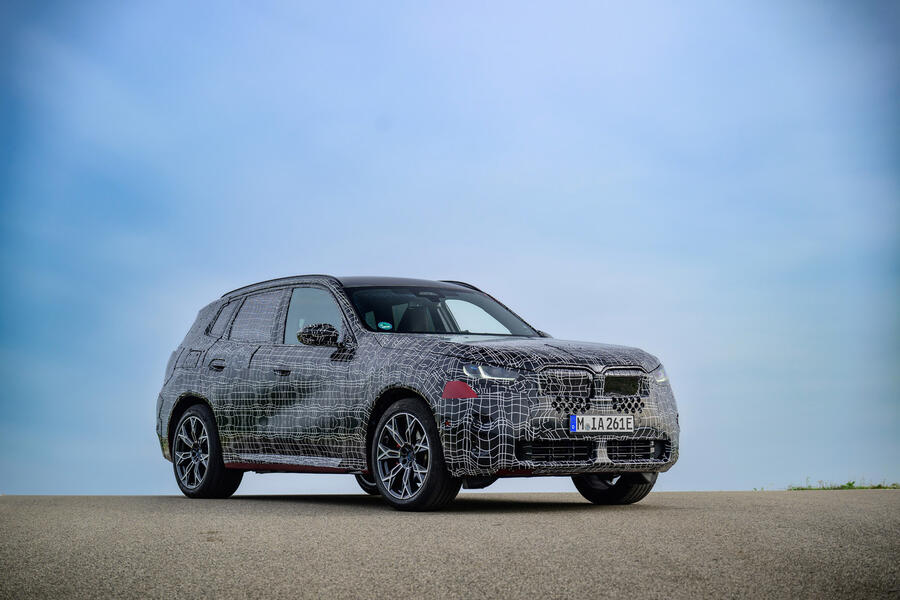
Verdict Keeps the ICE flag flying with extensive upgrades to its design, chassis, interior, tech and more
Model tested BMW X3 M50 xDrive prototype
Price £68,000 (est) Engine 6 cyls in line, 2998cc, turbocharged, petrol Power 396bhp (est) Torque 369lb ft (est) Gearbox 8-spd automatic, 4WD Kerb weight 1905kg 0-62mph 4.6sec (est) Top speed 155mph (est) Economy na CO2, tax band na Rivals Audi Q5, Mercedes-Benz GLC, Porsche Macan


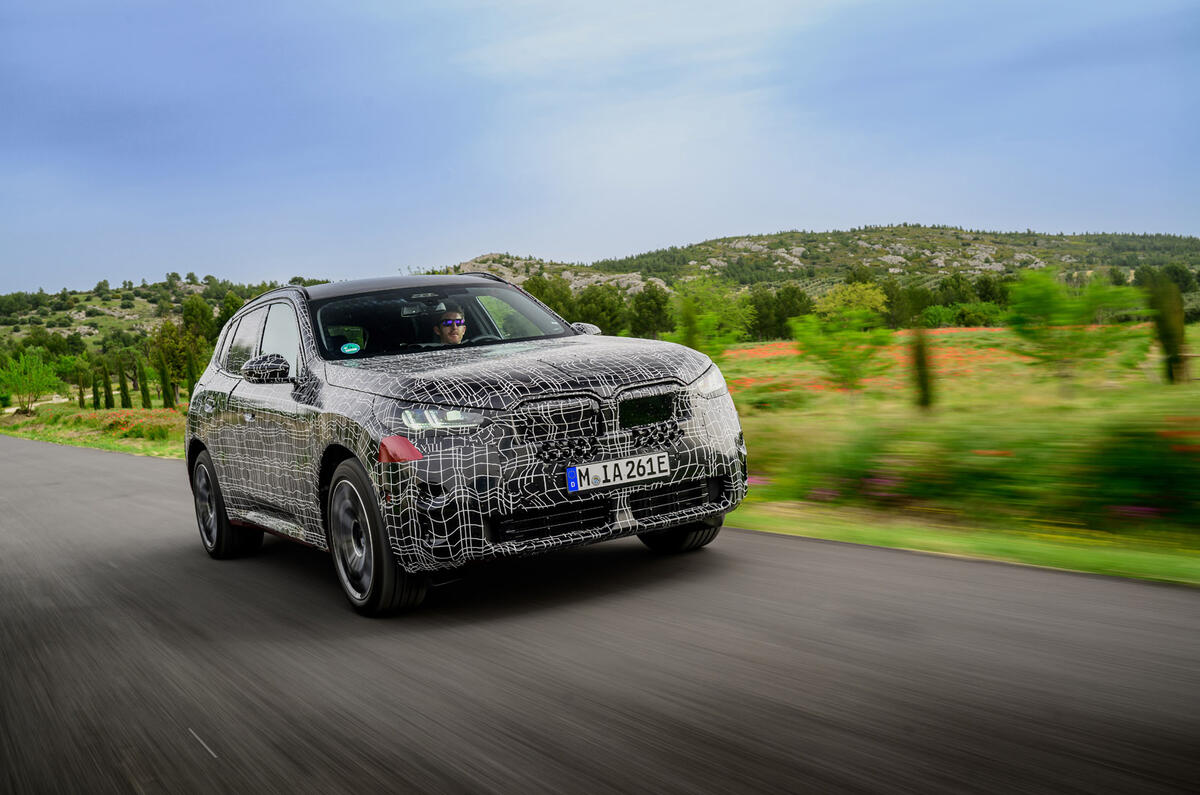
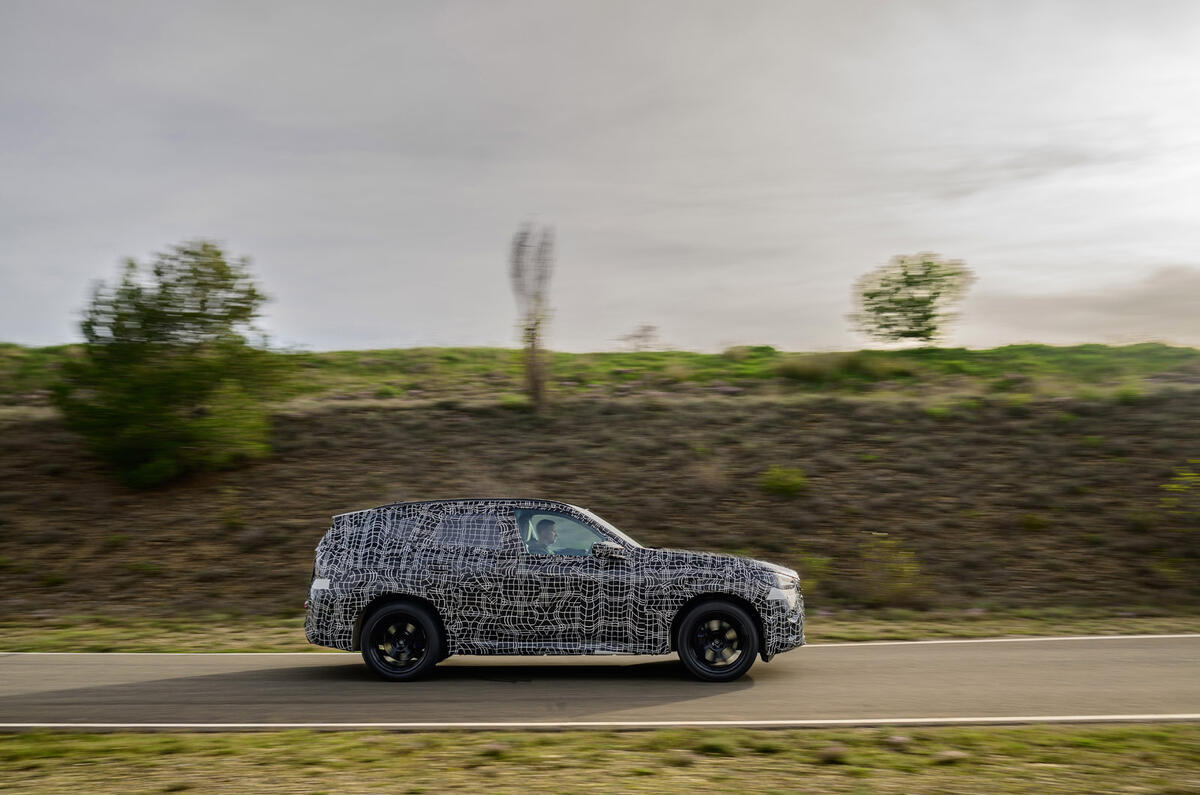
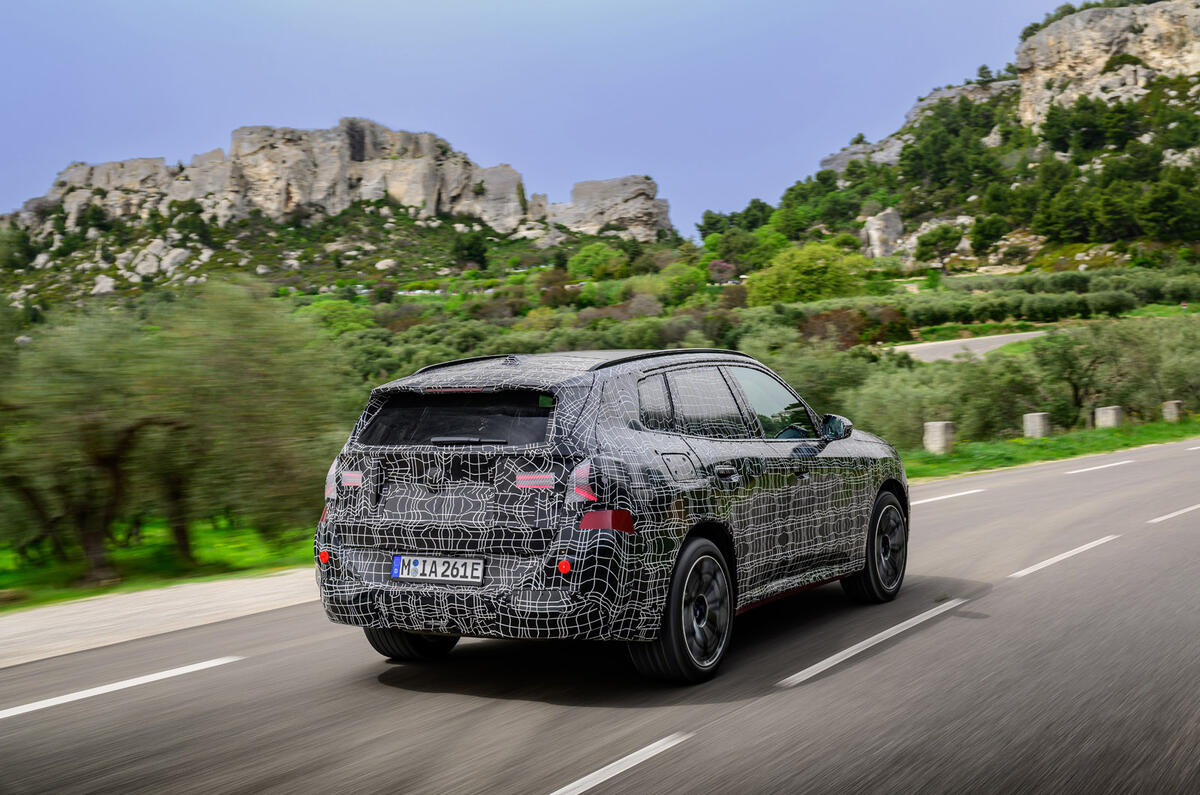
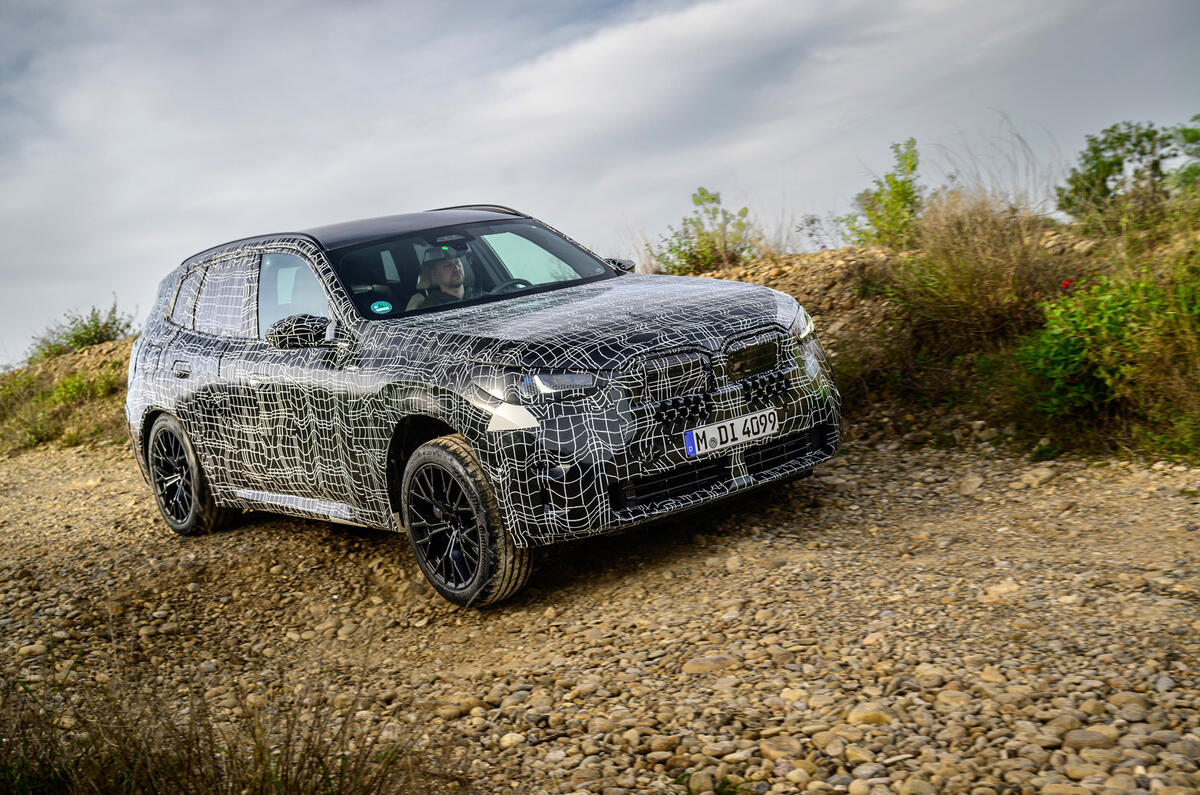
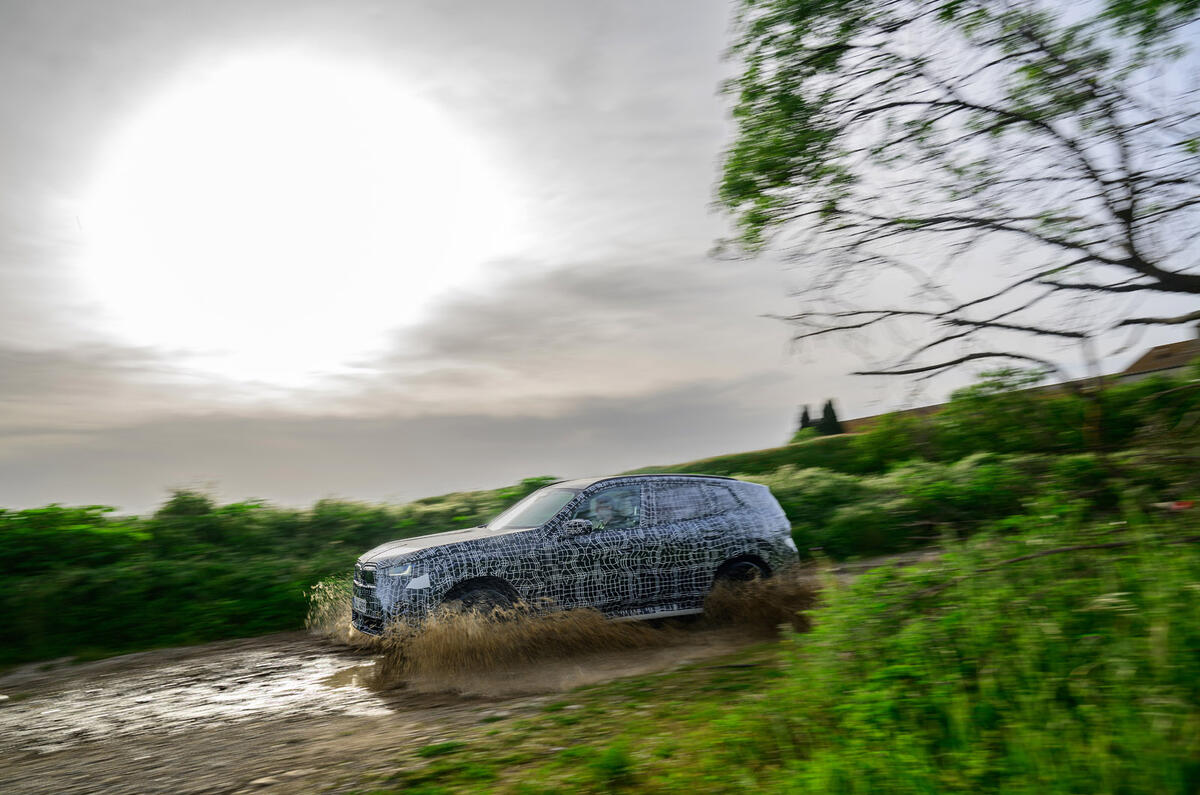

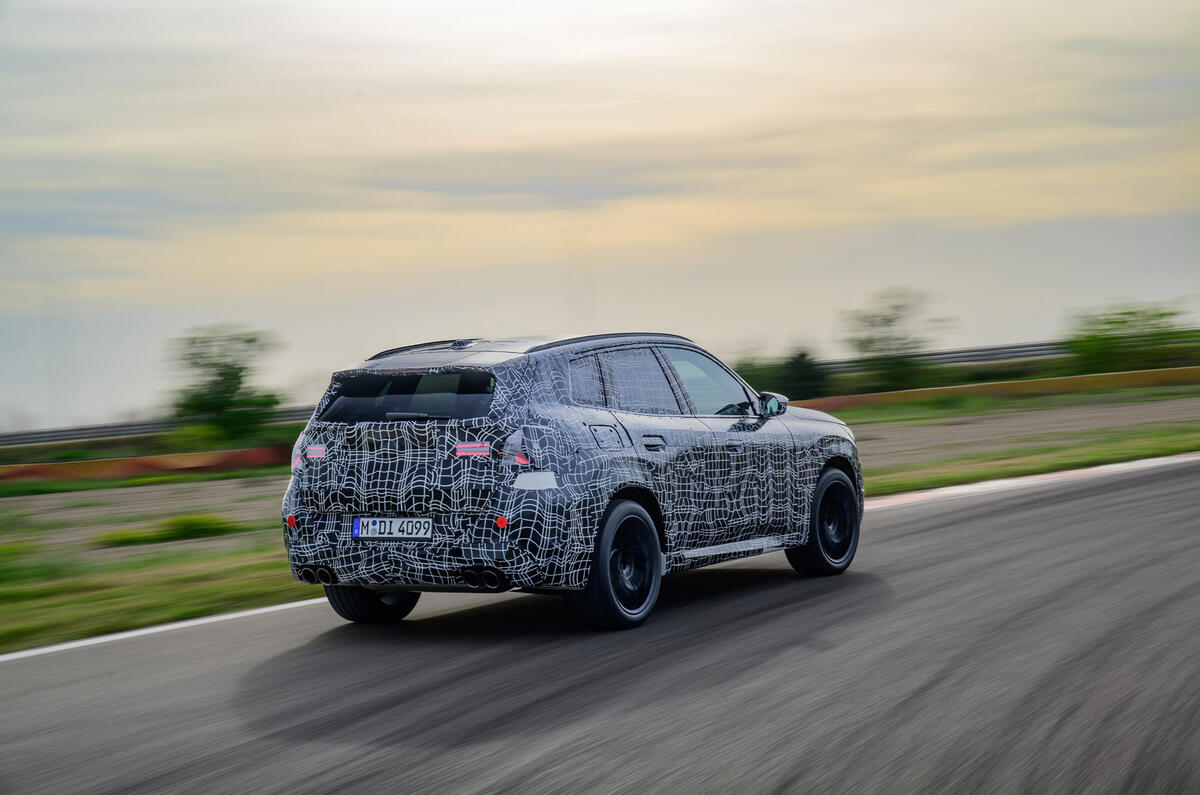
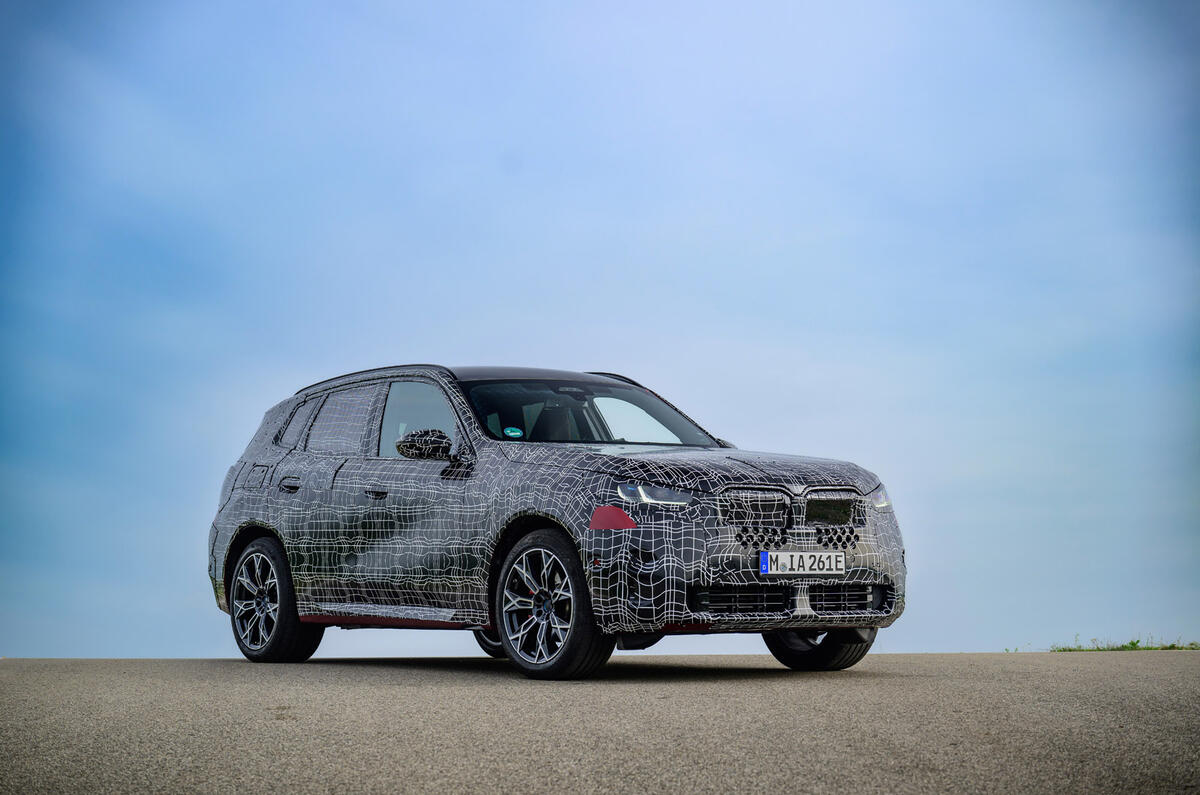
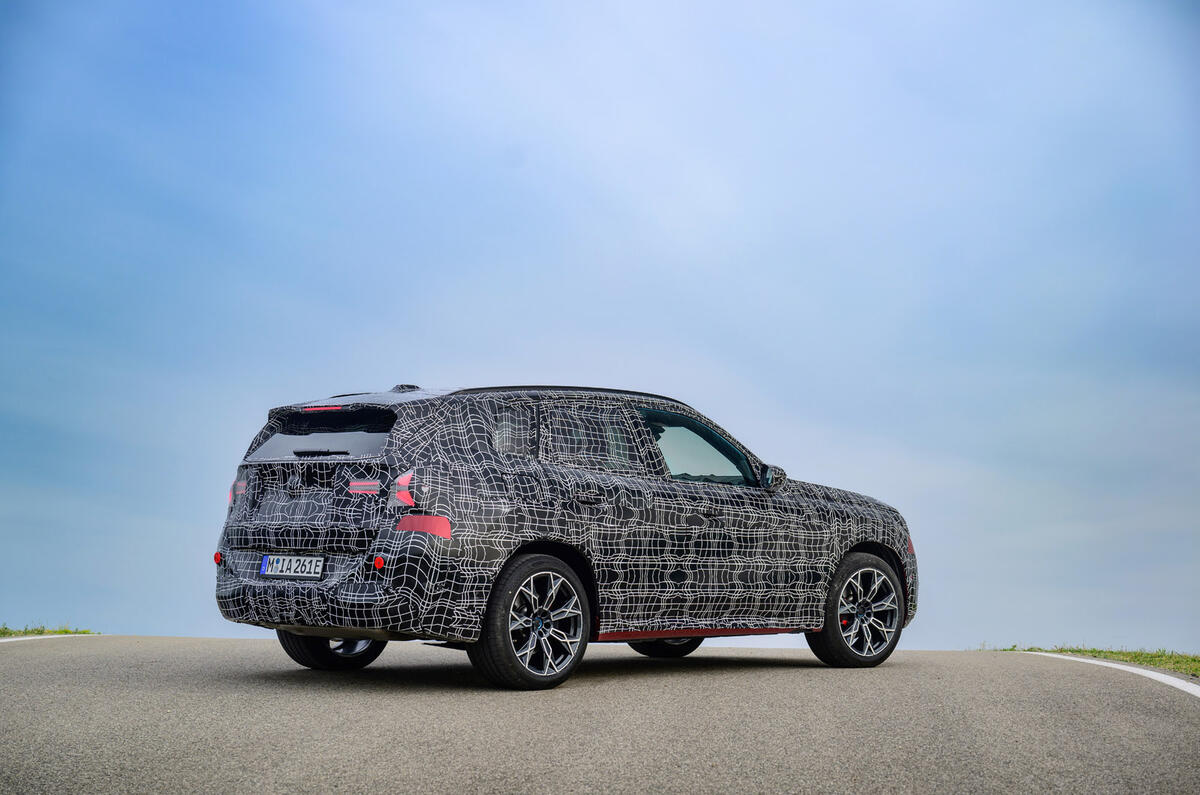
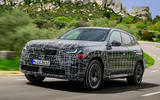
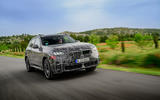
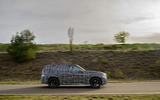
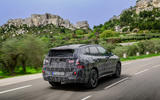
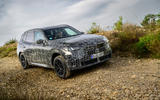
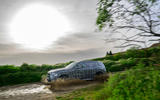
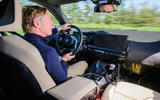
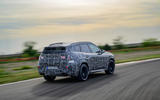

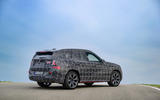


Join the debate
Add your comment
One day a major car company will resist the temptation to make every successive new model even bigger than its predecessor. It's a form of idleness and simply demonstrates a lack of design ability, confidence and responsibility.
Did you spend the past 18months telling us this was going to be styled like the neue klasse concept?
This is the internal combustion engine variant of the new X3, which retains traditional styling, not far removed from the current X3 and X1.
The electric-only iX3 (which will come almost a year after the ICE version) will be the one styled like the Neue Klasse X.
Thanks, I shouldve read the article!
So BMW had a massive headstart with EVs on bespoke platforms, flipped to EV versions of their ICE models, and now are flopping back to bespoke EV models again?..